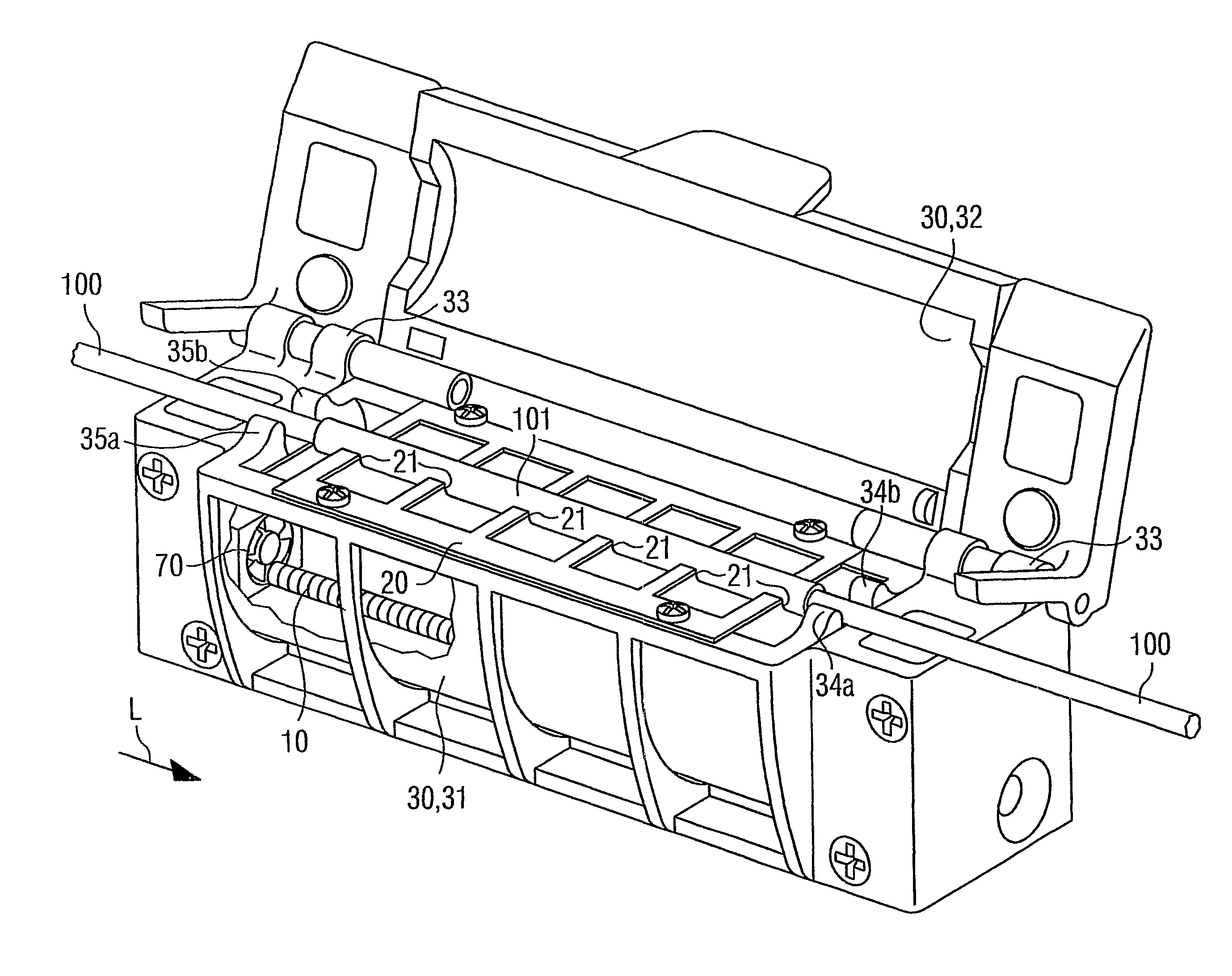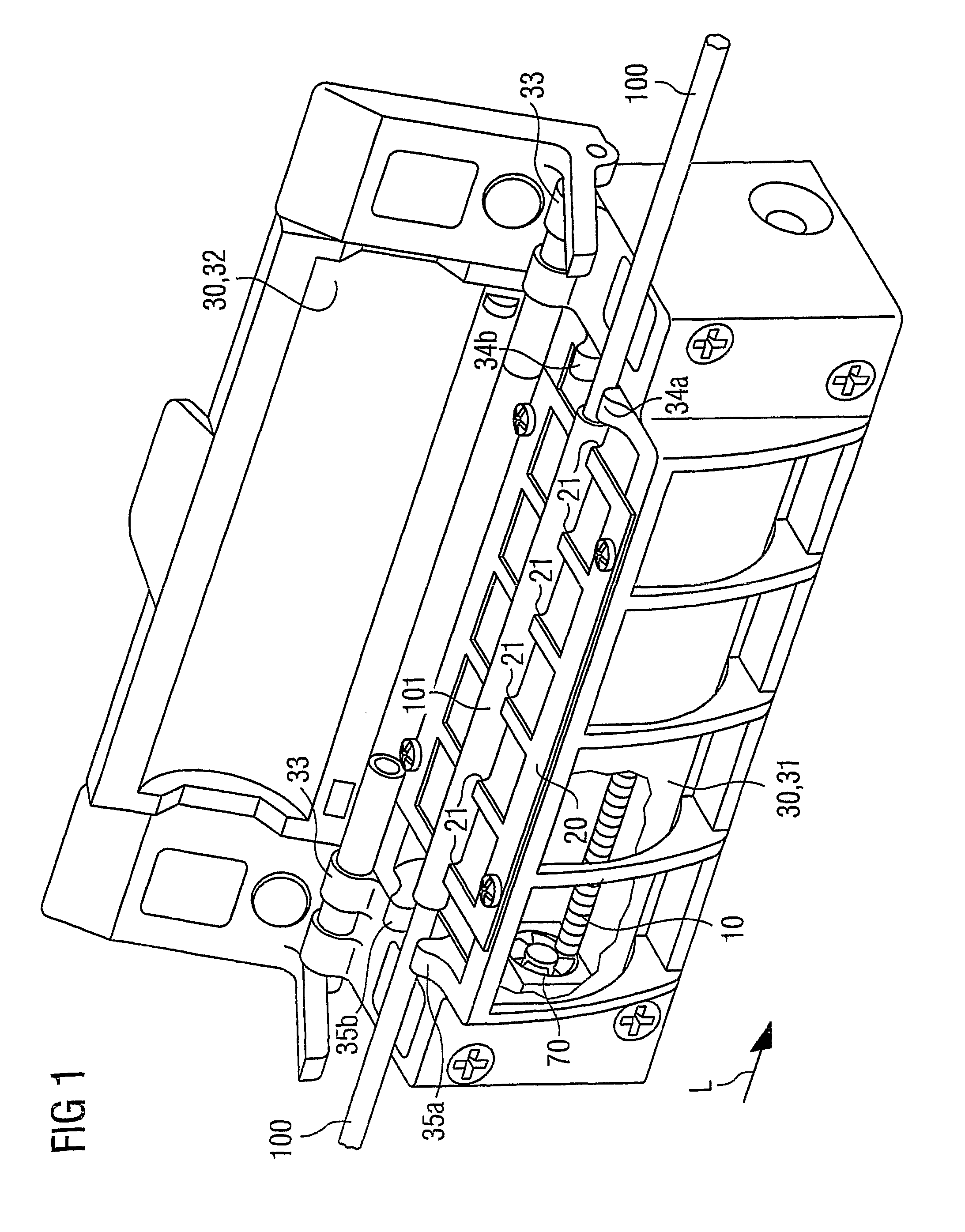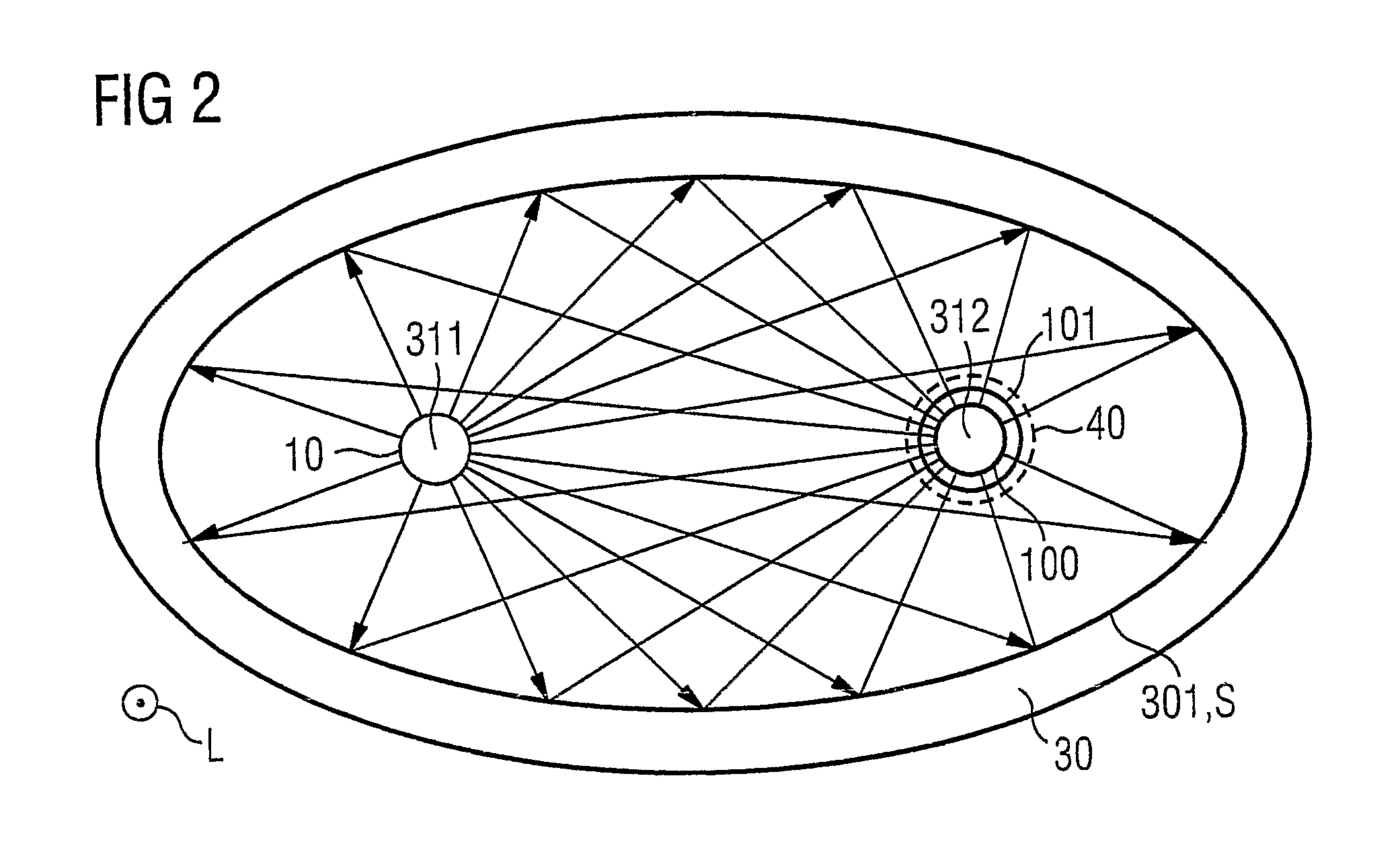Apparatus and method for applying a protective element on an optical waveguide
a protective element and optical waveguide technology, applied in the field of apparatus and method for applying a protective element on an optical waveguide, can solve the problems of large consumption of thermal output generated by the heating element, heat loss of the protective element, and heat transfer of the heating element to the protective element, so as to reduce electrical power consumption, reduce heat loss, and reduce power loss.
- Summary
- Abstract
- Description
- Claims
- Application Information
AI Technical Summary
Benefits of technology
Problems solved by technology
Method used
Image
Examples
Embodiment Construction
[0042]FIG. 1 perspectively illustrates an exemplary embodiment of the device according to the invention for shrinking a protective element 101 onto an optical waveguide 100.
[0043]The device comprises a heating element 10, a mount for the optical waveguide 100 and a reflector 30, which are accommodated in a common housing, for example comprised of injection molding or plastic material. The protective element 101 surrounds a section of the optical waveguide 100. The optical waveguide 100 and the protective element 101 surrounding it extend in a longitudinal direction L.
[0044]The reflector 30 extends in the longitudinal direction L over a specific length, is embodied as a hollow body and is integrated into the housing. The reflector 30 comprises a reflective area having identical cross sections in the form of ellipses over the entire length of the reflector 30 with regard to the longitudinal direction L. One of the ellipses in each case has a first and a second focal point. A first foc...
PUM
| Property | Measurement | Unit |
|---|---|---|
| power consumption | aaaaa | aaaaa |
| power consumption | aaaaa | aaaaa |
| thermal radiation | aaaaa | aaaaa |
Abstract
Description
Claims
Application Information
 Login to View More
Login to View More - R&D
- Intellectual Property
- Life Sciences
- Materials
- Tech Scout
- Unparalleled Data Quality
- Higher Quality Content
- 60% Fewer Hallucinations
Browse by: Latest US Patents, China's latest patents, Technical Efficacy Thesaurus, Application Domain, Technology Topic, Popular Technical Reports.
© 2025 PatSnap. All rights reserved.Legal|Privacy policy|Modern Slavery Act Transparency Statement|Sitemap|About US| Contact US: help@patsnap.com



